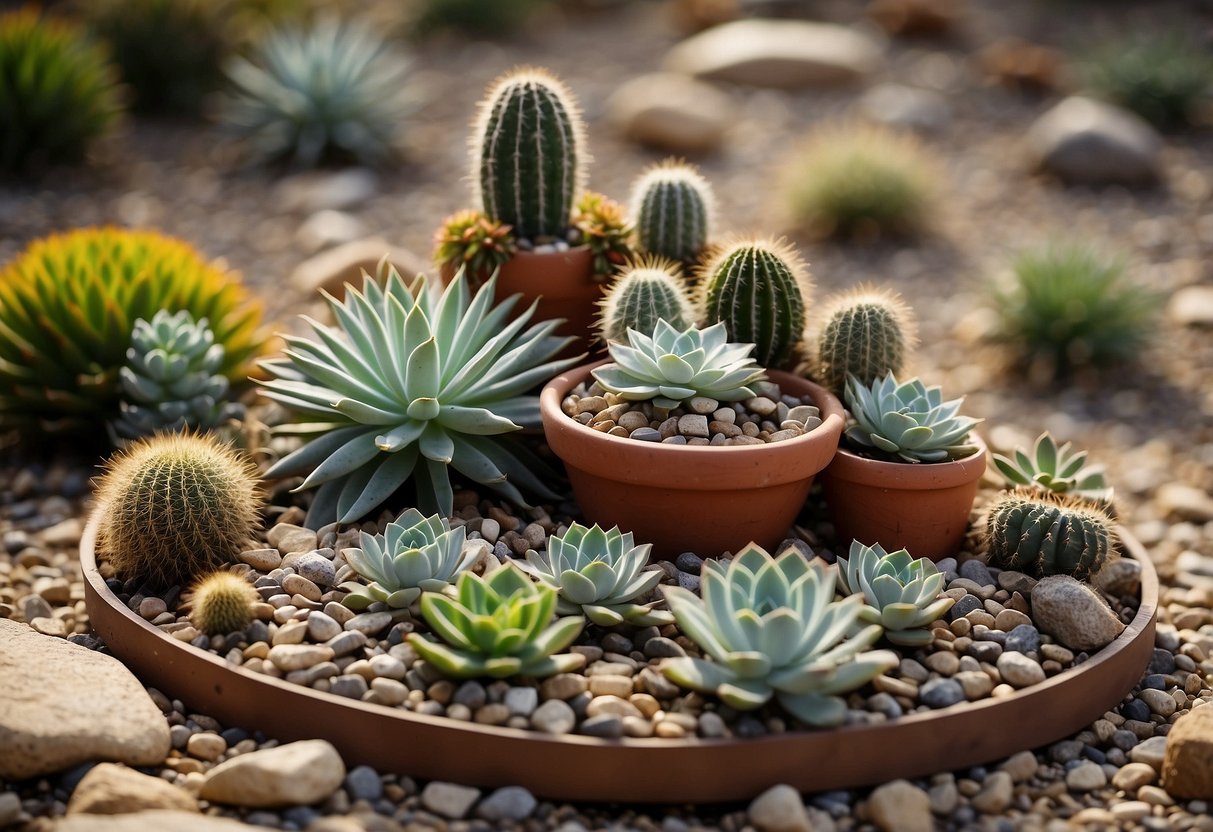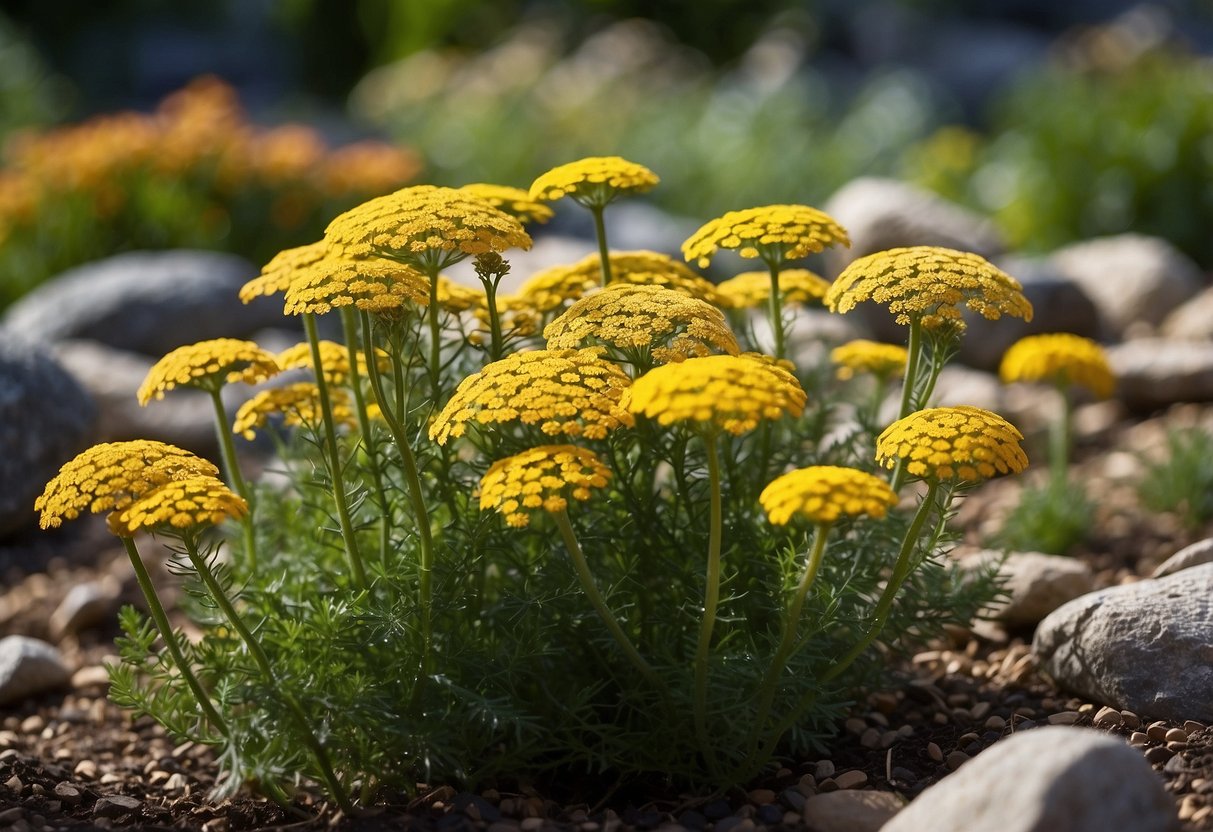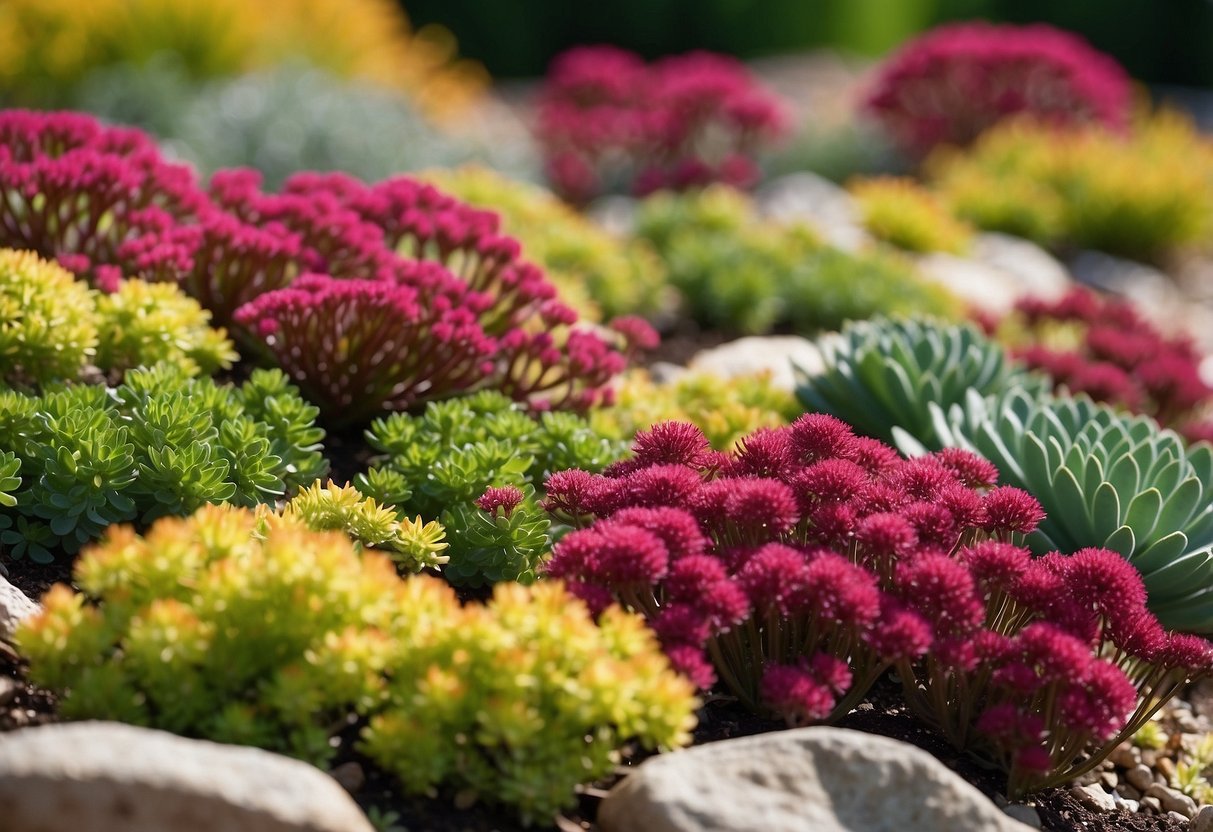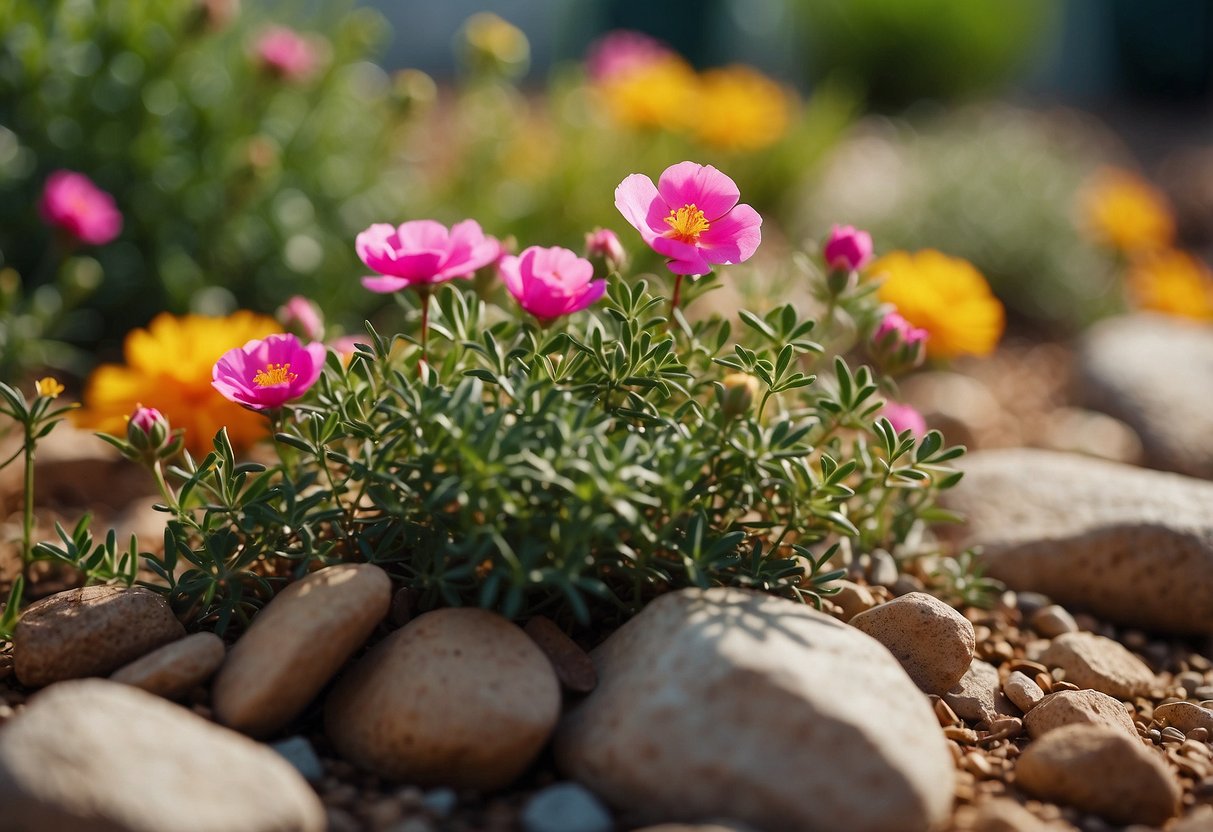Drought Tolerant Garden Ideas: Creative Tips for a Lush, Water-Wise Yard
Creating a beautiful garden while saving water might seem challenging, but it’s entirely possible with the right approach. By focusing on plants that thrive in dry conditions and designing your space thoughtfully, you can have a lush and gorgeous garden even in times of drought.

Why worry about water use? Because conserving water not only helps the environment but can also reduce your water bills. Plus, a drought-tolerant garden often requires less maintenance, giving you more time to enjoy your outdoor space.
1) Succulents

Succulents are perfect for drought-tolerant gardens. They store water in their leaves, making them ideal for dry conditions. Popular types include hens and chicks, which are hardy in cold climates and can survive frost.
You can also try echeverias, which create colorful displays. They thrive in hot, sunny spots and are easy to care for. To see more succulent garden ideas, check out these designs. Additionally, sempervivum and sedums are great choices that thrive in various zones. Consider layering gravel and succulent soil to create a beautiful display for your garden.
2) Lavender

Lavender is a wonderful, drought-tolerant plant for your garden. It thrives in dry conditions and adds a beautiful pop of purple color.
Native to the Mediterranean region, lavender grows well in sandy or gravelly soil. Make sure your soil drains well to prevent root rot.
Lavender also has the added benefit of being a natural pest repellent, including scorpions. It’s a great choice for low-maintenance gardening. If you want more details, check out this guide on drought-tolerant lavender varieties.
Plant lavender in a sunny spot and enjoy its fragrance all season long.
3) Agave

Agave is a fantastic choice for a drought-tolerant garden. These succulents are not only low-maintenance but also fire-resistant and can thrive with minimal water.
You can pair agave with other drought-resistant plants like Yucca or Sedum for a stunning desert garden display. Planting agave in well-drained soil and providing full sun will help it flourish.
Consider creating a front yard landscape with agave. It’s best to water agave once a week or every other week, especially during extended droughts. The plant’s unique look adds a touch of Southwestern beauty to any landscape.
4) Yarrow

Yarrow is a fantastic choice for a drought-tolerant garden. It thrives in well-draining soil and can grow in conditions where other plants might struggle. Once established, it barely needs any water.
There are several beautiful varieties of yarrow, such as ‘Paprika’ which grows up to two feet tall and has deep pink to red flowers.
Yarrow prefers full sun and can handle poor, dry soil. If you choose Moonshine yarrow, you’ll get a plant that’s not only drought-tolerant but also deer-resistant. It’s a great addition to any low-water garden.
5) Sedum

Sedum, also known as stonecrop, is a fantastic choice for your drought-tolerant garden. These plants are hardy and can thrive in poor soil conditions.
Sedums come in many colors and sizes, making them versatile for garden design. They are great for rock gardens, borders, and as ground cover.
With their ease of care and striking appearance, they add beauty to any garden. Consider adding sedum to save water and enjoy a low-maintenance garden.
Learn more about various sedum varieties to choose the best one for your garden.
6) Euphorbia

Euphorbia, also known as spurge, is a fantastic choice for a drought-tolerant garden. These plants come in many varieties with unique shapes and colors, making them a versatile addition.
You’ll love Euphorbia’s ability to thrive in dry conditions. They require little water and can grow in poor soil, perfect for low-maintenance gardening.
Consider trying Euphorbia myrsinites for its striking blue-green leaves or Euphorbia “Ascot Rainbow” for its colorful foliage. Both will add visual interest to your garden.
7) Russian Sage

Russian sage is a fantastic choice for a drought-tolerant garden. It loves hot, dry conditions and well-draining soil.
You’ll find it does best with 6-8 hours of full sun each day. When planting, space your plants 2-3 feet apart.
This plant is also very low maintenance. Once established, it rarely needs watering, making it perfect for dry areas of your yard. For planting tips, visit Proven Winners.
Prune the woody stems down to 6 inches in early spring for new growth. For more care tips, check out Garden Design.
8) Thyme

Thyme is a perfect choice for your drought-tolerant garden. This hardy herb thrives in dry conditions and poor soil. Its small, aromatic leaves add flavor to many dishes.
You can choose from different types of thyme. For instance, creeping thyme can be used as ground cover, adding both beauty and utility to your garden.
Make sure your thyme gets plenty of sunlight—at least 6 hours a day. This plant loves the sun and heat. Regular but moderate watering helps thyme stay healthy, especially in its early stages.
9) California poppy

California poppies are a great choice for drought-tolerant gardens. These bright, cup-shaped flowers add vibrant color with minimal water needs.
They thrive in various soil conditions and are easy to grow. Just sow the seeds in fall or early spring when the ground is workable.
Once established, California poppies are very hardy. They can withstand dry conditions, making them perfect for water-wise gardening. Learn more about how to grow California poppies.
10) Rockrose

Rockrose, or Cistus, is an excellent choice for drought-tolerant gardens. It’s known for its hardiness and ability to thrive in dry climates.
This robust plant can handle extreme heat and poor-quality soils. Rockroses have beautiful, showy blooms and evergreen leaves, adding year-long interest to your garden.
They are resistant to deer, making them a practical addition where wildlife is common. For more details, you can explore various Cistus varieties for your garden.
Understanding Drought Tolerant Gardens

Drought-tolerant gardens can save water and still look beautiful. These gardens include plants that need less water and maintenance.
Benefits of Drought Tolerant Gardens
Drought-tolerant gardens help you save water, which is crucial in dry climates. These gardens lower your water bill because they require less irrigation. They are also easier to maintain, saving you time and effort.
Having a drought-tolerant garden can make your landscape more resilient. It will thrive even during dry periods or water restrictions. These gardens also promote healthier soil, which can support a variety of plants. They attract beneficial insects and wildlife, creating a balanced ecosystem.
Key Characteristics of Drought Tolerant Plants
Drought-tolerant plants have special features to survive with less water. Many have deep roots that reach water far below the surface. Some plants, like succulents, store water in their leaves or stems.
These plants often have small or narrow leaves to reduce water loss. Many drought-tolerant plants have silvery or hairy leaves that reflect sunlight and reduce evaporation. They are adapted to thrive in poor soil and with minimal care.
Some examples include ‘Sea Foam’ artemisia, East Friesland salvia, and bearded iris. You can find more plants well-suited to your local climate and soil type by exploring drought-tolerant garden plans.
Design Tips for Drought Tolerant Gardens

Creating a garden that thrives in dry conditions involves choosing the right plants, using efficient irrigation, and preparing the soil properly.
Choosing the Right Plants
Picking drought-tolerant plants is crucial. Look for plants like succulents, lavender, and certain grasses. These plants store water in their leaves and roots, helping them survive long periods without rain.
Plants with gray or silver foliage, such as lamb’s ear and Russian sage, also do well in dry conditions. Not only do these plants use less water, but they also add interesting textures and colors to your garden.
Consider using native plants as they are usually well-adapted to local conditions and require less maintenance.
Effective Irrigation Techniques
Efficient watering is vital for a drought-tolerant garden. Drip irrigation systems are one of the best methods because they deliver water directly to the plant roots, reducing waste.
Another option is a soaker hose that slowly releases water into the soil.
Watering early in the morning or late in the evening reduces evaporation, ensuring more water reaches the plants.
Also, grouping plants with similar water needs together can help make your watering efforts more effective and efficient.
Soil Preparation and Mulching
Good soil preparation can make a significant difference. Start by adding organic matter like compost to improve soil structure and water retention.
Mulching is another key practice. Apply a layer of mulch around your plants to conserve soil moisture and suppress weeds.
Materials like wood chips, straw, or even stones can be used as mulch. Mulch helps keep the soil cooler, reduces evaporation, and, over time, breaks down to add nutrients to the soil.







